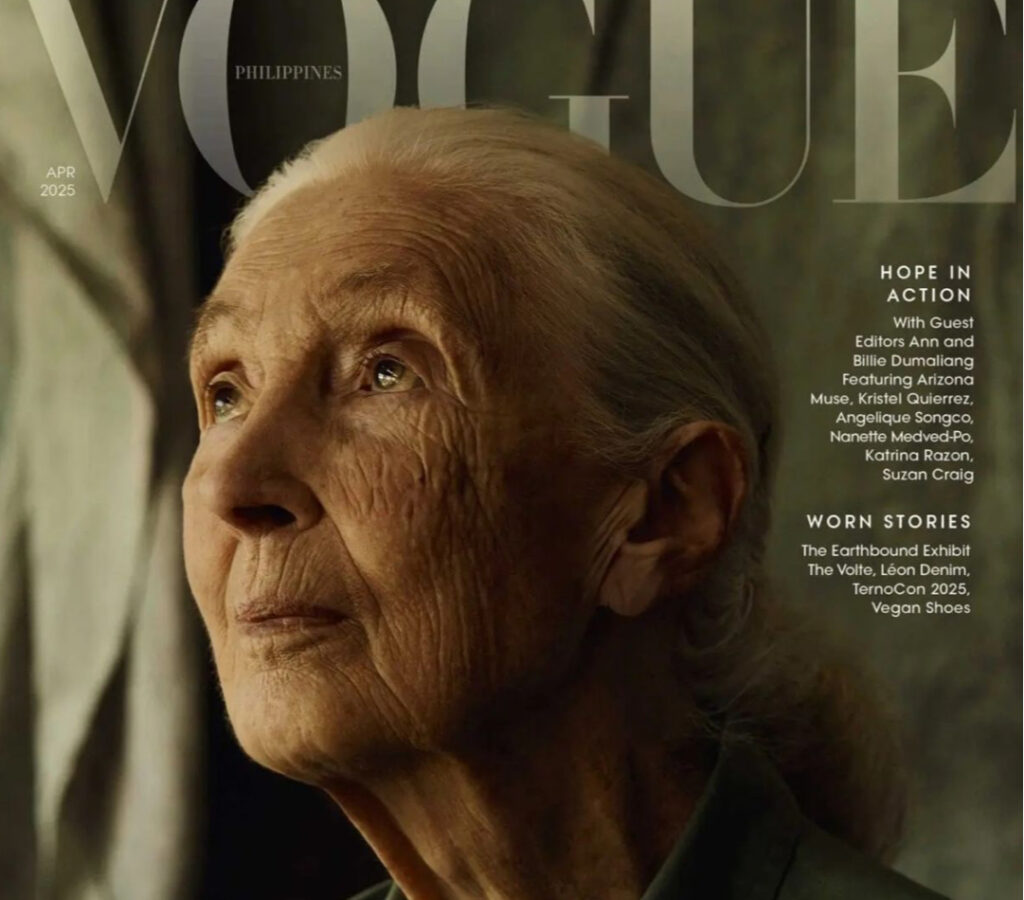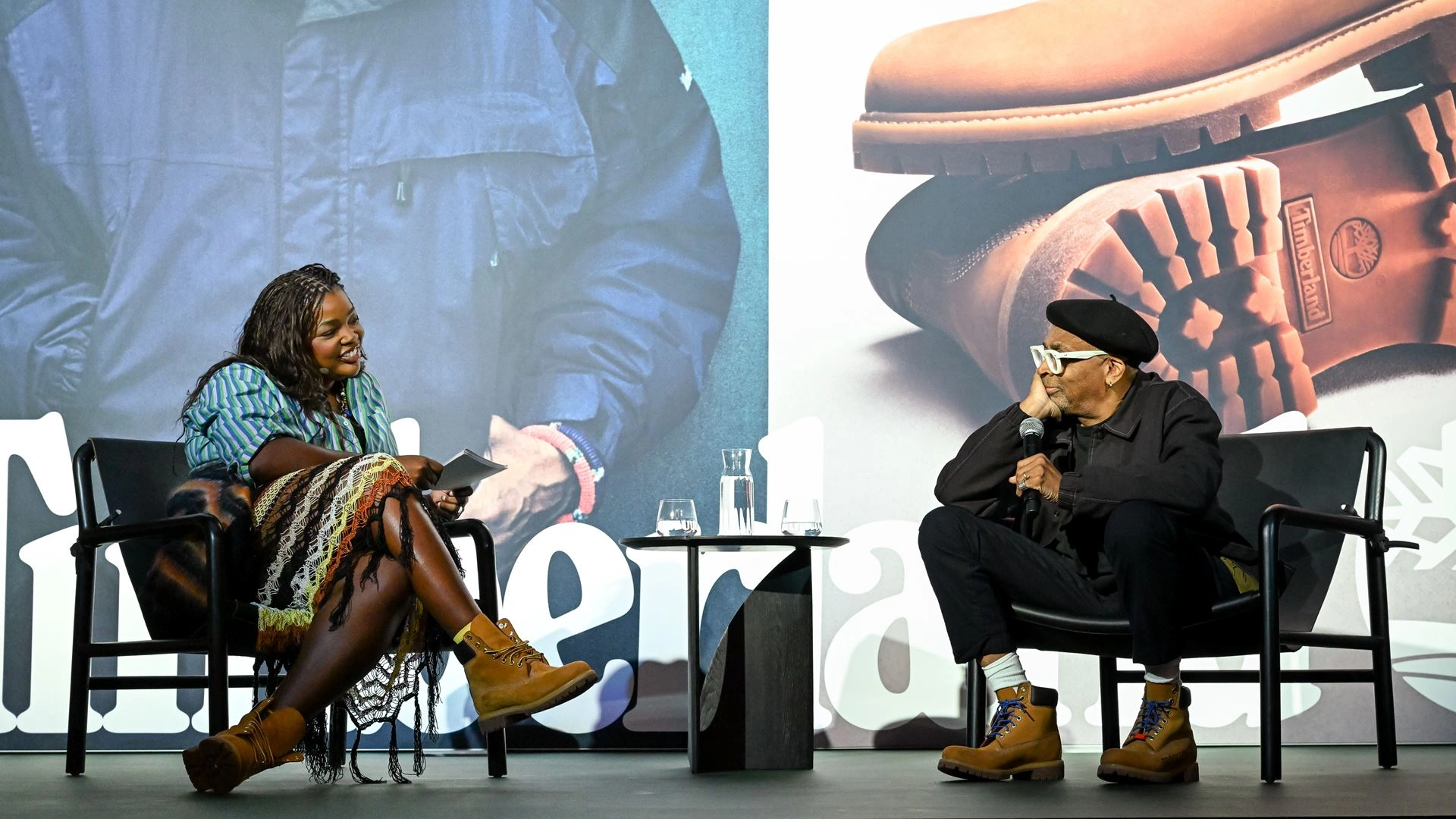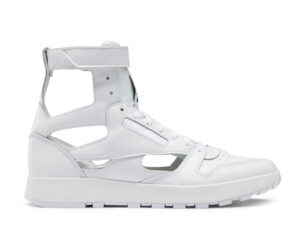At 91 years old, Dr. Jane Goodall is not slowing down—in fact, she may be moving faster than ever. With a 27-country tour that spans continents and cultures, she remains a tireless advocate for conservation, compassion, and the collective power of people. From Singapore’s coral reefs to the dense forests of Nepal and the bustling cityscapes of India, Dr. Goodall’s global journey is not just a celebration of her life’s work—it’s an urgent call to action.
Her recent feature on the cover of Vogue Philippines serves as a fitting tribute, but also as a reminder: this isn’t the swan song of a legacy, it’s a continuation. Jane Goodall isn’t just a figure from the past. She’s a force for the future.
The Living Legend in Motion
Goodall’s name is synonymous with chimpanzees. She became globally renowned for her groundbreaking research in Tanzania’s Gombe Stream National Park beginning in the 1960s. At a time when the scientific world scoffed at the idea that animals had emotions or distinct personalities, Goodall observed chimpanzees using tools, forming bonds, and showing empathy—upending established notions of animal behavior.
But long after her years in the jungle, Dr. Goodall transformed from scientist to global ambassador for the planet. Through her Jane Goodall Institute, founded in 1977, and the youth-focused Roots & Shoots program she launched in 1991, she’s become an architect of environmental hope.
Her recent 27-country tour—one of the most extensive journeys of her career—spanned Asia, Africa, Europe, and the Americas. Even with the limitations that might come with age, her schedule was relentless. Speaking engagements, reforestation events, meetings with students, scientists, and heads of state—Jane Goodall is everywhere. And everywhere she goes, she listens, learns, and most importantly, inspires.
Asia: A Region in Flux and Resilience
The Asian leg of her tour paints a vibrant picture of environmental action and cultural renewal.
In Singapore, Dr. Goodall visited restored coral reef sites—areas once bleached and barren that now pulse with marine life. There, she witnessed firsthand how community-led conservation efforts are bringing ecosystems back from the brink. She spoke with young marine biologists, reinforcing her belief in the power of the next generation.
In Hong Kong, she participated in the release of a rehabilitated bird back into the wild, a moment she described as “a small but beautiful reminder that nature, when given the chance, can heal.”
Nepal saw her planting native trees in Kathmandu, symbolizing reforestation in a region battered by climate change and deforestation. She praised the local communities for embracing sustainable land practices and emphasized the importance of reconnecting urban populations with nature.
In Mumbai, she met with researchers studying urban leopards—big cats who roam the fringes of one of the world’s busiest cities. Goodall highlighted their resilience and adaptability, drawing parallels to human communities working to coexist with nature rather than dominate it.
Each of these moments reveals something vital: Dr. Goodall does not see despair in environmental degradation—she sees opportunity, regeneration, and responsibility.
“We Make an Impact Every Day”
If there’s one phrase Dr. Goodall repeats more than any other, it’s this:
“Every single one of us makes an impact every single day. We get to choose what sort of impact we make.”
This mantra isn’t just a catchy quote. It’s a life philosophy. It’s the bedrock of her youth outreach programs, particularly Roots & Shoots, which empowers young people in over 100 countries to lead environmental, humanitarian, and conservation projects in their own communities.
Roots & Shoots alumni now serve as scientists, policymakers, activists, and educators. Many credit Goodall for helping them discover their passion and purpose at a young age. Whether it’s a teenager building a plastic-recycling initiative in Manila or a young farmer restoring indigenous plants in Kenya, these changemakers carry Jane’s spirit forward.
Her energy, they say, is infectious. Even in brief meetings or video calls, she conveys urgency without panic, hope without naïveté.
On the Cover of Vogue at 91
When Vogue Philippines revealed Dr. Jane Goodall as their April 2025 cover star, it sent a message loud and clear: reverence for beauty and style should include reverence for purpose, wisdom, and action.
In the feature, she appears not as a celebrity but as a truth-teller, her life’s work draped over her shoulders like a shawl—soft, warm, and undeniably powerful.
The Vogue profile touches on her connection to nature, her personal rituals (like her treasured time spent among trees), and her unique blend of fierce determination and gentle diplomacy. It’s also a rare reflection on aging in the spotlight.
“I never imagined I’d still be traveling like this in my nineties,” she tells Vogue. “But the planet can’t wait. And the young people give me strength.”
This recognition from a fashion magazine signals more than admiration. It’s validation of Goodall’s crossover appeal—not just to scientists or activists, but to all who value depth, intention, and courage.
Beyond Fame: A Movement Grows
Jane Goodall’s influence has transcended science and even conservation. She has become a moral compass in a time of global uncertainty. In a world rocked by climate anxiety, biodiversity collapse, and political division, she offers clarity.
She reminds us that the problems we face are human-made—and that humans can fix them.
Her brand of activism is rooted in patience and pragmatism. She meets oil executives and teenage activists with the same calm gaze. She’s known to tell stories—about a rescued chimpanzee, a village girl planting trees, a moment of unexpected joy in the forest—because stories are how people learn, connect, and remember.
Her work also now includes advocating for animal welfare, indigenous land rights, plant-based diets, and corporate responsibility. Through the Jane Goodall Institute, research continues in Gombe, but her real mission lies in building bridges—between humans and animals, rich and poor, young and old, East and West.
The Jane Goodall Institute: Still at the Forefront
The Jane Goodall Institute (JGI) continues to be a leader in conservation, advancing work in forest protection, animal research, and community-centered development. Their “Tacare” program in Africa integrates conservation with healthcare, education, and gender equality.
In technology, JGI works with satellite mapping, AI, and drones to track forests and chimpanzee habitats. It’s cutting-edge science, backed by deep local trust—something Goodall has nurtured for decades.
The institute’s global reach is mirrored in Jane’s travels. Each time she steps into a school, sanctuary, or summit, she’s expanding the network. Not just of partnerships—but of believers.
The Challenge of Optimism
Maintaining hope in the face of staggering environmental loss is no small task. Dr. Goodall doesn’t deny the scale of the crisis—but she refuses to accept defeat.
When asked how she remains optimistic, she usually lists four reasons:
- The Energy and Commitment of Young People
- The Power of the Human Intellect
- The Resilience of Nature
- The Indomitable Human Spirit
These aren’t platitudes. They’re observed realities. She’s seen forests regrow, species rebound, communities rebuild. She’s seen children with no resources launch conservation programs that change their villages. And she’s seen once-exploitative corporations start to shift under pressure from consumers and activists alike.
Jane Goodall’s True Bequest
Legacy is a tricky thing. Some people chase it; others build it without trying. Jane Goodall has done neither. She’s simply followed her instincts—into the forest, into the lecture hall, onto the world stage.
Her impression cannot be measured in publications alone, or awards (of which there are many), or in her profile as a UN Messenger of Peace. It’s best measured in ripples.
The girl who stopped eating meat because of Jane.
The mayor who started a tree-planting campaign because of Jane.
The CEO who shifted his company’s supply chain because of Jane.
The child in a refugee camp who still believes she can protect animals—because of Jane.
At 91, she is still creating ripples. Every stop on her tour is a wave. And every young conservationist she speaks to is proof that she’s still planting seeds.
Not Slowing Down, Just Changing Pace
Dr. Jane Goodall is unstoppable not because she’s fast—but because she’s consistent. Because she listens, adapts, and never loses sight of the big picture. Because she believes in people.
Her tour may end, but her work will not. Not as long as there are forests to protect, animals to save, and children to inspire.
The world doesn’t just need more Jane Goodalls. It needs more people who believe they can be one.
No comments yet.








